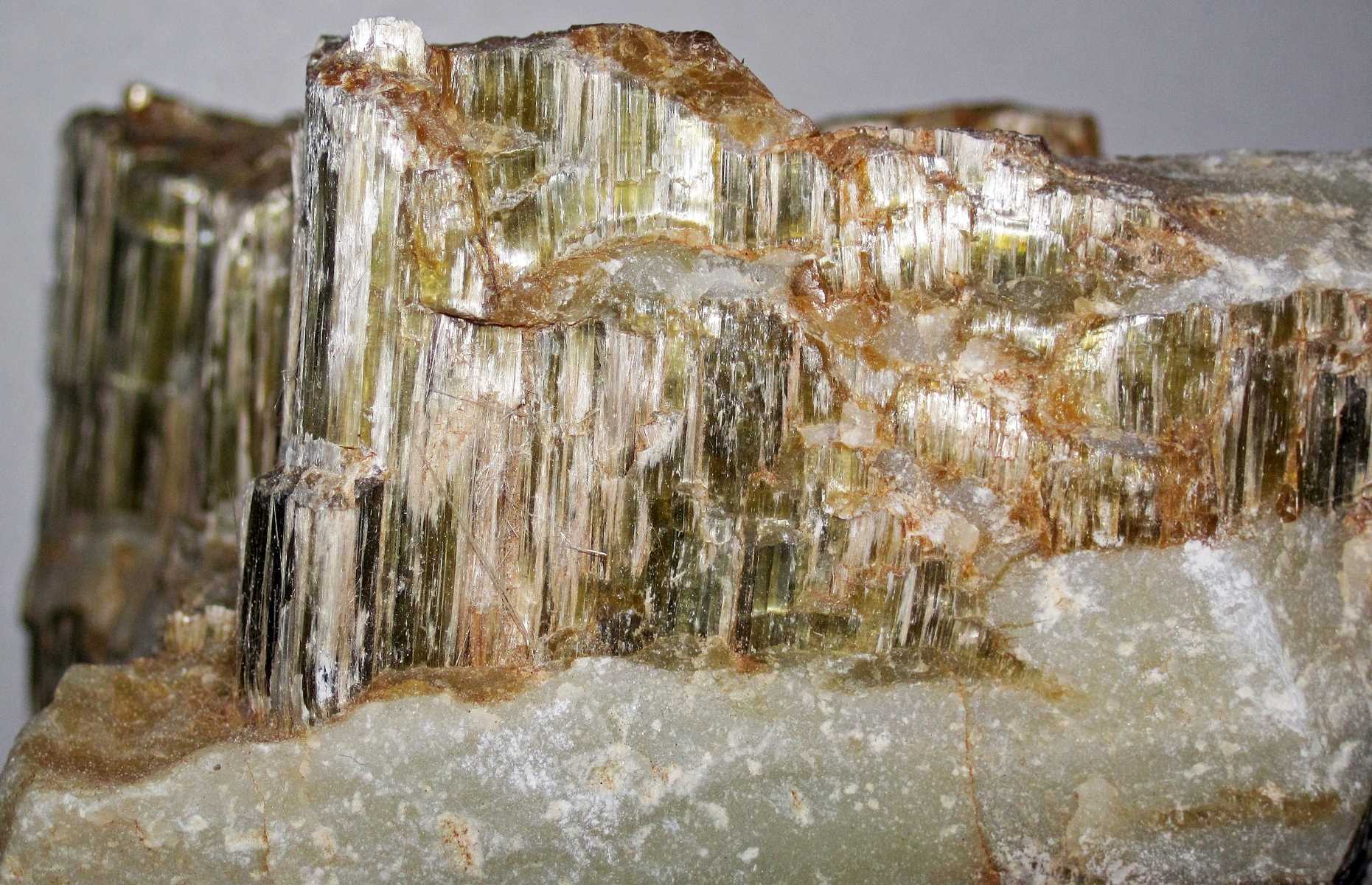
Chrysotile, also known as white asbestos, is a naturally occurring mineral that has been widely used in various industries due to its heat-resistant properties. But what exactly makes this mineral so special, and why is it surrounded by controversy? Chrysotile fibers are incredibly strong and flexible, making them ideal for use in construction materials, automotive parts, and even textiles. However, the health risks associated with chrysotile exposure have led to significant debate and regulation. Did you know that despite its dangers, some countries still allow the use of chrysotile under strict guidelines? This post will dive into 50 intriguing facts about chrysotile, shedding light on its history, uses, and the ongoing discussions about its safety. Buckle up for a fascinating journey through the world of chrysotile!
Key Takeaways:
- Chrysotile, also known as white asbestos, has been widely used in construction and industry due to its unique properties. However, it poses significant health risks and has led to regulations and bans in many countries.
- Despite its historical uses and ongoing debates, chrysotile continues to be a topic of discussion. Ongoing efforts focus on finding safer alternatives, increasing regulation, and educating the public about the dangers of asbestos exposure.
What is Chrysotile?
Chrysotile, also known as white asbestos, is a naturally occurring mineral. It belongs to the serpentine group of minerals and has been widely used in various industries. Here are some fascinating facts about chrysotile.
- Chrysotile is the most common type of asbestos, making up about 95% of asbestos found in buildings in the United States.
- It has a fibrous structure, which makes it useful for insulation and fireproofing.
- Chrysotile fibers are flexible and can be woven into fabrics.
- The mineral is resistant to heat, electricity, and chemical damage.
- It was commonly used in construction materials like roofing shingles, ceiling tiles, and cement.
Historical Uses of Chrysotile
Chrysotile has a long history of use due to its unique properties. Let's explore some of the historical applications.
- Ancient Greeks used chrysotile to make lamp wicks because of its fire-resistant properties.
- In the 19th century, it became popular in the textile industry for making fireproof clothing.
- During World War II, chrysotile was used extensively in shipbuilding for insulation.
- It was also used in brake linings for vehicles due to its durability and heat resistance.
- Chrysotile was a key component in the production of asbestos cement, which was used for pipes and building materials.
Health Risks Associated with Chrysotile
Despite its many uses, chrysotile poses significant health risks. Here are some important facts about its impact on health.
- Inhalation of chrysotile fibers can cause serious lung diseases.
- Asbestosis, a chronic lung disease, is caused by prolonged exposure to asbestos fibers.
- Chrysotile exposure is linked to lung cancer.
- Mesothelioma, a rare cancer of the lining of the lungs or abdomen, is strongly associated with asbestos exposure.
- Even short-term exposure to high levels of chrysotile can be harmful.
Regulations and Bans on Chrysotile
Due to its health risks, many countries have implemented regulations and bans on chrysotile. Here are some key points.
- The United States Environmental Protection Agency (EPA) has strict regulations on asbestos use.
- The European Union has banned all forms of asbestos, including chrysotile.
- Canada, once a major producer of chrysotile, banned its use in 2018.
- Australia completely banned asbestos in 2003.
- Despite bans in many countries, chrysotile is still used in some developing nations.
Environmental Impact of Chrysotile
Chrysotile not only affects human health but also has environmental implications. Here are some facts about its environmental impact.
- Mining of chrysotile can lead to environmental degradation.
- Asbestos waste can contaminate soil and water sources.
- Improper disposal of asbestos-containing materials can release fibers into the air.
- Natural disasters, such as earthquakes, can disturb asbestos-containing materials, posing a risk to the environment.
- Cleanup and remediation of asbestos-contaminated sites are costly and time-consuming.
Alternatives to Chrysotile
Given the health and environmental risks, alternatives to chrysotile have been developed. Here are some of the substitutes.
- Fiberglass is a common alternative used for insulation.
- Cellulose fibers, derived from plants, are used in building materials.
- Polyurethane foam is another substitute for insulation purposes.
- Thermoset plastic flour is used in brake linings instead of chrysotile.
- Amorphous silica fabric is used in high-temperature applications as a replacement.
Interesting Facts About Chrysotile
Beyond its uses and risks, chrysotile has some intriguing aspects. Let's dive into some lesser-known facts.
- Chrysotile fibers can be up to 100 times thinner than human hair.
- The name "chrysotile" comes from the Greek words "chrysos" (gold) and "tilos" (fiber).
- It is the only type of asbestos that belongs to the serpentine mineral group.
- Chrysotile fibers are often white, but can also appear green or yellow.
- Despite its dangers, chrysotile was once marketed as a "miracle mineral" due to its versatility.
Chrysotile in Modern Times
Even today, chrysotile continues to be a topic of discussion. Here are some current facts about its use and regulation.
- Some countries still produce and export chrysotile, including Russia and Kazakhstan.
- The World Health Organization (WHO) has called for a global ban on all forms of asbestos.
- Ongoing research aims to find safer ways to handle and dispose of asbestos materials.
- Public awareness campaigns educate people about the dangers of asbestos exposure.
- Legal battles continue over compensation for asbestos-related illnesses.
The Future of Chrysotile
What does the future hold for chrysotile? Here are some predictions and ongoing efforts.
- Advances in technology may lead to safer alternatives for asbestos-containing materials.
- Increased regulation and enforcement could reduce the use of chrysotile worldwide.
- Scientists are exploring ways to neutralize asbestos fibers to make them less harmful.
- International cooperation is essential for addressing the global asbestos problem.
- Education and training programs aim to protect workers from asbestos exposure.
Final Thoughts on Chrysotile
Chrysotile has a complex history and continues to be a subject of debate. Here are a few more facts to consider.
- Asbestos-related diseases can take decades to develop after exposure.
- Some argue that controlled use of chrysotile can be safe, but many experts disagree.
- The economic impact of banning chrysotile includes job losses in mining and manufacturing.
- Asbestos abatement is a growing industry focused on safely removing asbestos from buildings.
- The legacy of chrysotile serves as a reminder of the importance of balancing industrial progress with health and safety.
Final Thoughts on Chrysotile
Chrysotile, a type of asbestos, has a complex history and varied uses. Known for its heat resistance and durability, it found its way into many products, from construction materials to automotive parts. However, its health risks can't be ignored. Prolonged exposure can lead to serious conditions like asbestosis and mesothelioma. Despite its industrial benefits, many countries have banned or restricted its use due to these dangers. Understanding both the advantages and hazards of chrysotile helps in making informed decisions about its application. Always prioritize safety and health when dealing with materials containing chrysotile. Stay informed and cautious, especially if you work in industries where asbestos exposure is a risk. Knowledge about chrysotile's properties and risks ensures better protection for everyone involved.
Frequently Asked Questions
Was this page helpful?
Our commitment to delivering trustworthy and engaging content is at the heart of what we do. Each fact on our site is contributed by real users like you, bringing a wealth of diverse insights and information. To ensure the highest standards of accuracy and reliability, our dedicated editors meticulously review each submission. This process guarantees that the facts we share are not only fascinating but also credible. Trust in our commitment to quality and authenticity as you explore and learn with us.


